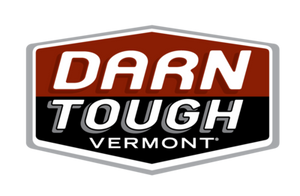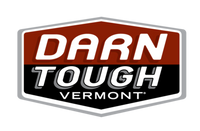From Farm to Yarn: The Story of Australian Merino Wool

We’ve shared and will continue to update you on the sustainability work happening here at Darn Tough Vermont, from sourcing Responsible Wool Standard certified Merino Wool to breathing new life into our overstock yarns. An important piece of our sustainability journey is collaborating with partners who help us trace the full story of our impact across the global supply chain. One of those partners is The Woolmark Company, a non-profit owned and operated by Australia’s woolgrowers to certify the quality of their wool. In this post, Woolmark’s team shares some of their insights into the Australian wool industry.
On Farm

At the heart of the Australian wool industry are the tens of thousands of woolgrowers who work tirelessly to look after their sheep and the land on which they graze. These woolgrowers have been the backbone of Australia for centuries, choosing to grow wool instead of other commodities. They take great pride in what they do and produce some of the world’s best wool. Most Australian woolgrowers have been implementing innovative and sustainable farming practices to secure the industry’s future.
 >
>
Ethical and environmentally sensitive farming can be as important for today's discerning customer as the quality of the clothing itself. From the high rainfall areas of the eastern seaboard to the drier pastoral areas of the west, woolgrowers work to preserve, protect, and improve the natural resources of their farms: the waterways, valleys and hills, and native plants and animals.
Environmental Assessment
While we believe wool is one of the most environmentally friendly fibers on the planet, we do recognize the wool industry still has an impact on the environment. A cradle-to-grave lifecycle assessment was commissioned to identify wool’s environmental hotspots, which was published in 2020 – the wool industry was in fact the first textile fiber to take a cradle-to-grave LCA study all the way to peer-reviewed publication. It included the farming stage, all the wool processing steps, the use phase, where people are wearing and washing their clothes, and ultimately the end-of-life of the garment.

The LCA study clearly showed that more than half of wool’s greenhouse gas emissions are from the farming stage and the great majority of this comes from the bodily functions of sheep. Mostly, the methane belched by sheep during the digestion of pasture, and to a lesser degree the nitrous oxide that’s released from their urine and manure. To address and mitigate these impacts, the Australian Wool Innovation is proactively investing in research into reducing and offsetting methane on the farm to arm woolgrowers with the best tools and resources to reduce emissions.
Animal Welfare
 >
>
Australian woolgrowers know that happy, healthy sheep produce the world’s best wool. The lifetime welfare of Australian sheep is the number one priority for Australian woolgrowers, who continue to innovate and strive for a long-term solution to work towards the ultimate goal of reducing the reliance on mulesing.
A growing number of Australian woolgrowers voluntarily participate in international sustainability accreditation and certification programs, which include Textile Exchange’s Responsible Wool Standard (RWS), a standard that prohibits mulesing. This RWS certification requires an annual audit to ensure their operations meet all animal welfare, land management, and social requirements as outlined in the standard. Due to Australia’s advanced and transparent wool industry, we’re able to trace wool back to the property where it was produced, providing consumers with confidence in the origins and quality of their Merino Wool
 >
>
A key responsibility and important step in caring for healthy and happy domestic sheep involves shearing their fleece; if not done, the fleece can become overgrown and impact the animals. Once the greasy/raw wool is harvested, it is then classed (graded) based on fiber diameter, plant matter, staple strength, staple length, color, and potential yield. Once graded the wool is baled up accordingly and shipped off-farm to their wool broker to be auctioned.
Wool Auctions
It is estimated approximately 85% of wool produced in Australian is offered for sale through open cry auctions. Wool auctions are typically rostered on 46 weeks of the year. Sale recess weeks include Christmas, Easter and in July. The Australian wool selling season commences in July and concludes in June.
Administratively the market is divided into three geographic regions: NORTH (for wool usually sourced from New South Wales/Queensland), SOUTH (Victoria/South Australia/Tasmania/New Zealand) and WEST (Western Australia). Auctions are conducted in three selling centers: Sydney, Melbourne, and Fremantle. Once sold on auction, the bales of wool are packaged into shipping containers and shipped overseas for the first stage of wool processing.
First Stage Processing of Wool
Before wool can be processed to yarn, it must be washed (scoured) to remove the bulk of contaminants (like dirt, sweat, and plant matter) from the raw fiber. Wool is passed through a series of bowls containing water and detergent. Excess dirty water is squeezed from the fiber before several rinses. After drying, the wools are conditioned, ready for the next stages of processing.

Carding removes the knots and tangles from the clean wool by gently teasing them apart using wire-covered rollers. Yarn can either then be made using:
- Woollen processes, where the wool leaves the card as slubbing ready for spinning, or
- Worsted processes, where the wool leaves as a continuous length of card sliver. The wool that ultimately ends up in Darn Tough socks uses this process.

The card sliver needs to be ‘gilled’ to straighten the fibers, making them more parallel and ready for combing. This is done by pulling the fibers through metal pins in a process like combing wet hair after a shower. Card sliver is commonly gilled about five times before moving onto the comb.

The combing process removes plant matter, as well as tangled and short fibers. After combing, the sliver is re-gilled two to three times. The sliver is now known as ‘top’. Before the newly formed top can enter the spinning stage, it must be made some 40 times thinner by drawing it down into a fine sliver, called a roving.
Spinning and Dyeing

During spinning, twist is inserted into the relatively weak roving/slubbing which binds the fibers closer together, increasing inter-fiber friction and imparting strength to the yarn. Yarns can also be twisted together to further increase strength.

Color is applied and fully absorbed into the wool fiber by dyeing in hot water. This process can be carried out at almost any stage, from loose wool, top, yarn, fabric, and even at the garment stage. However, for Darn Tough socks, dyeing happens at the yarn stage. Wool naturally takes and holds dye very well.
Sock Manufacturing
From there, the yarn is purchased for a variety of uses. Darn Tough Vermont uses this yarn to make their unconditionally guaranteed for life socks.
The wool arrives in Vermont on cones (extra-large spools). These spools are connected to the knitting machines, which then knit up the socks, in a whole variety of weights, cushion, height, and design options.

In addition to Merino Wool, Darn Tough strategically knits in Nylon and Lycra Spandex yarns to achieve the best fit and maximize durability. You can learn more about who makes Darn Tough socks and what goes into maintaining quality in the sock manufacturing process in our other posts.
About the Author
The Woolmark Company is a subsidiary of Australian Wool Innovation, a not-for-profit enterprise owned by more than 60,000 woolgrowers that invests in research, development, and marketing along the worldwide supply chain for Australian wool. We encourage and unite the entire supply chain, by connecting, inspiring and educating, guaranteeing wool fiber quality, collaborating with like-minded brands and championing the wool fiber’s eco-credentials.
Merino sheep, farm, and wool processing images courtesy of The Woolmark Company.







